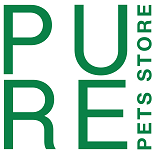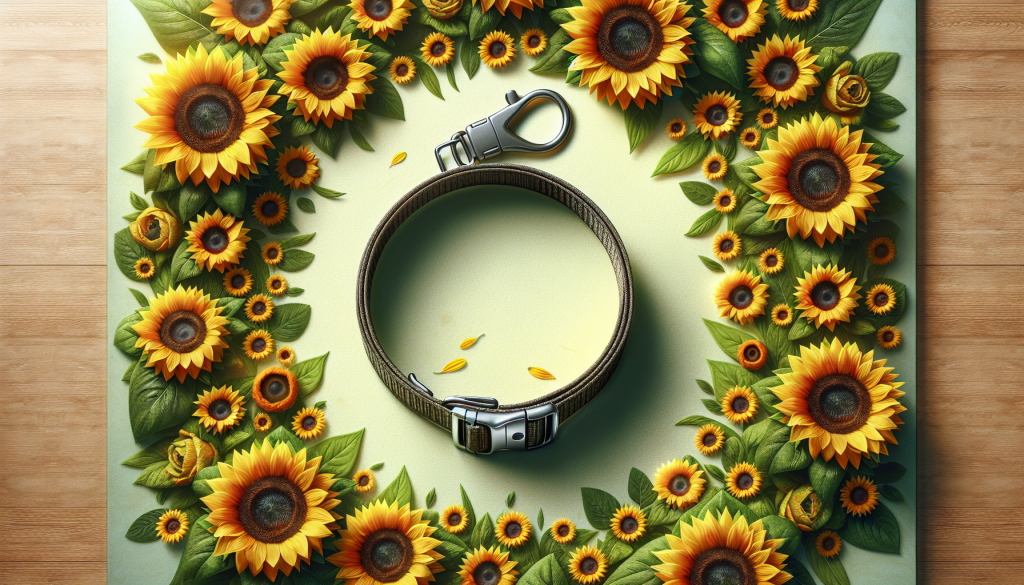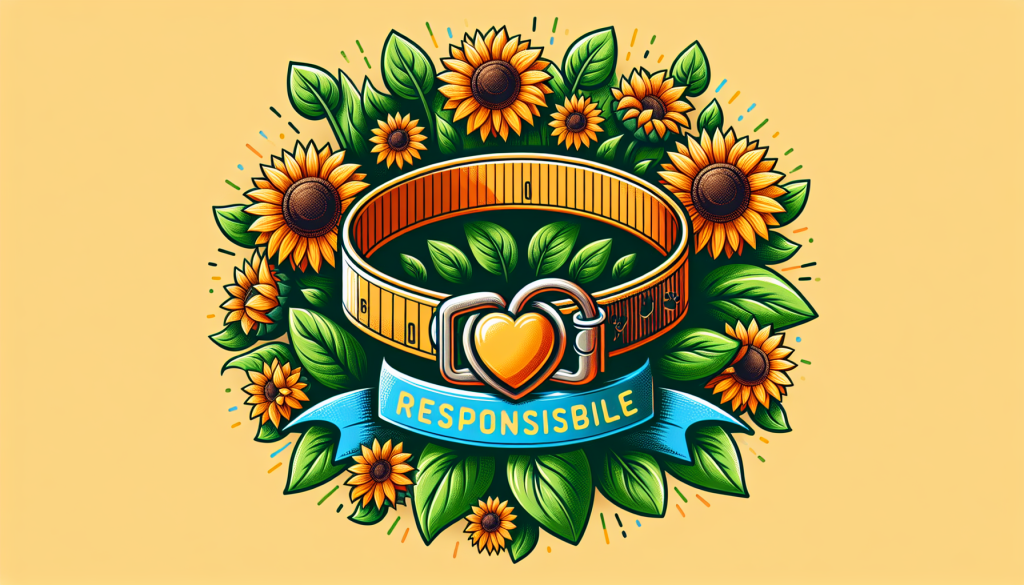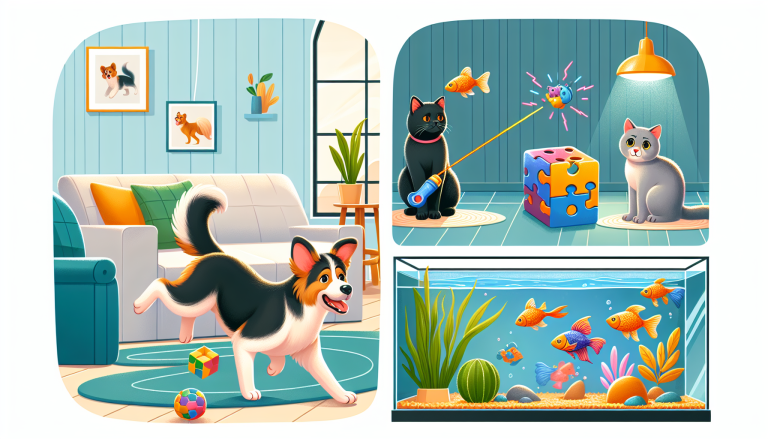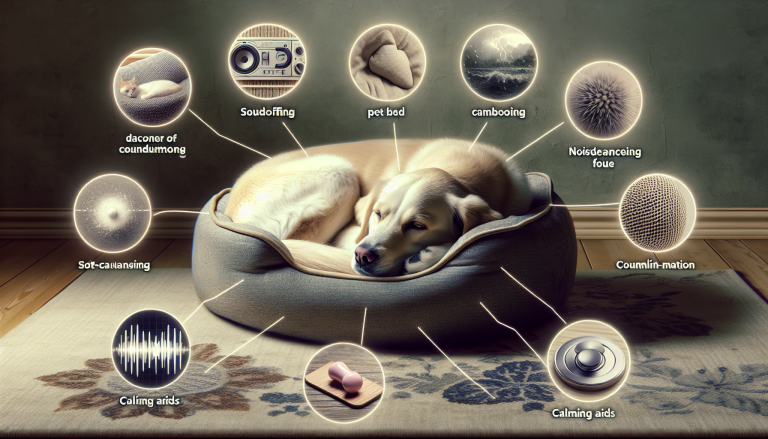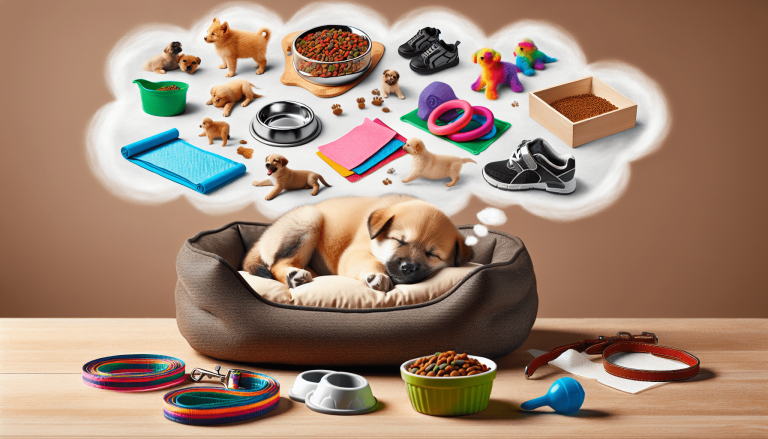If you’re a proud pet owner, then you know that keeping your furry friend happy and healthy is your top priority. But with so much information out there, it can be overwhelming to know where to start. That’s why we’ve put together a list of the 10 essential pet care tips that every owner should know. From nutrition to exercise, grooming to hygiene, these tips will help you provide the best possible care for your beloved companion. Whether you’ve just brought home a new puppy or have been a long-time pet parent, these tips are sure to come in handy. So, let’s dive in and ensure that your pet gets the love and attention they deserve!
Table of Contents
ToggleDaily Care
Provide a balanced diet
Ensuring that your pet receives a balanced diet is of utmost importance for their overall health and well-being. Consult with your veterinarian to determine the appropriate type and amount of food for your pet’s specific needs. Consider factors such as age, breed, size, and any underlying health conditions. Remember to choose high-quality pet food that is nutritionally complete and provides all the necessary vitamins and minerals.
Ensure fresh water is always available
Just like humans, pets need access to fresh and clean water throughout the day. Make sure to provide your pet with a clean water source and check it regularly to ensure it doesn’t run out. Additionally, clean the water bowl daily to prevent the buildup of bacteria and algae.
Take regular walks or exercise sessions
Regular exercise is vital for your pet’s physical and mental well-being. Dogs, in particular, require daily walks or exercise sessions to maintain a healthy weight and prevent behavioral problems. Set aside time each day to engage in activities that your pet enjoys, whether it’s playing fetch, going for a jog, or even swimming.
Provide mental stimulation and playtime
Pets need mental stimulation to prevent boredom and destructive behavior. Offer a variety of toys, such as puzzle toys or treat-dispensing toys, to keep your pet mentally engaged. Additionally, playing interactive games with your pet, such as hide-and-seek or training sessions, can provide both mental stimulation and bonding time.
Keep a clean living environment
Maintaining a clean living environment is crucial for your pet’s health. Regularly clean your pet’s bedding, toys, and living areas to prevent the buildup of dirt, bacteria, and parasites. Vacuum and mop the floors regularly to minimize allergens and ensure a clean living space for both you and your pet.
Healthcare
Schedule regular veterinary check-ups
Regular visits to the veterinarian are essential to monitor your pet’s overall health and address any potential issues early on. Your veterinarian can perform routine examinations, check vital signs, and administer necessary vaccinations. Additionally, they can provide advice on nutrition, behavior, and preventive care specific to your pet’s needs.
Stay up-to-date with vaccinations
Vaccinations play a crucial role in preventing various diseases that can be harmful or even fatal to your pet. Consult with your veterinarian to establish a vaccination schedule tailored to your pet’s age, lifestyle, and potential exposure. Keep a record of your pet’s vaccinations, and make sure to stay up-to-date with boosters as recommended by your veterinarian.
Prevent parasites with appropriate treatments
External and internal parasites can cause discomfort and health issues for your pet. Consult with your veterinarian to determine the right parasite prevention products for your pet, such as flea and tick preventatives or deworming treatments. Administer these treatments regularly and as directed to keep your pet parasite-free.
Maintain oral hygiene
Good oral hygiene is crucial for your pet’s overall health. Brush your pet’s teeth regularly using a pet-specific toothbrush and toothpaste. Alternatively, provide dental chews or treats that can help reduce plaque and tartar buildup. Regular professional dental cleanings may also be necessary for some pets, so consult with your veterinarian about the best dental care routine for your furry friend.
Be aware of signs of illness
As a responsible pet owner, it’s important to be vigilant and aware of any signs of illness in your pet. Monitor their behavior, appetite, and energy levels, and watch for changes such as excessive thirst, lethargy, vomiting, or any unusual symptoms. If you notice any concerning signs, consult with your veterinarian promptly to ensure timely diagnosis and treatment.
Grooming
Brush your pet regularly
Regular brushing helps keep your pet’s coat in good condition and can prevent matting and excessive shedding. The frequency of brushing depends on the type of coat your pet has. Long-haired pets generally require daily brushing, while short-haired pets may only need brushing a few times a week. You can also consider professional grooming services for certain breeds or if you need assistance with more complex grooming tasks.
Bath them when necessary
Bathing your pet helps keep their skin and coat clean and healthy. The frequency of bathing depends on your pet’s breed, activity level, and personal hygiene habits. While some dogs may require frequent baths, others may only need bathing every few months. Use a pet-specific shampoo and make sure to rinse your pet thoroughly to remove all the soap residue.
Trim nails regularly
Keeping your pet’s nails trimmed is important to prevent discomfort and potential injuries. If you can hear your pet’s nails clicking on the floor, it’s a sign that they need to be trimmed. Use a pet nail trimmer or grinder, and be careful not to cut into the quick, which is the sensitive part of the nail. If you’re unsure or uncomfortable with trimming your pet’s nails, consider seeking the help of a professional groomer or veterinarian.
Clean their ears
Regularly cleaning your pet’s ears can help prevent ear infections and discomfort. Use a gentle ear cleaning solution and cotton balls or soft gauze to clean the visible part of the ear. Avoid inserting anything into the ear canal, as it can damage the ear. If you notice any redness, swelling, or discharge in your pet’s ears, consult with your veterinarian for further evaluation and treatment.
Check for any skin issues
Regularly check your pet’s skin for any signs of irritation, dryness, redness, or lumps. Pay attention to excessive scratching, hair loss, or changes in the texture or color of the skin. If you notice any concerning skin issues, consult with your veterinarian for further examination and advice on appropriate treatment or preventive measures.
Safety
Pet-proof your home
Before bringing your pet home, ensure your living space is safe and free of potential hazards. Remove or secure any toxic plants, chemicals, or small objects that your pet could ingest. Keep electrical cords out of reach and secure any loose wires. Consider using baby gates to restrict access to certain areas of your home.
Keep harmful substances out of reach
Many common household items can be toxic to pets if ingested. Store medications, cleaning products, and other chemicals in secure cabinets or high shelves. Avoid using pesticides or insecticides that can be harmful to your pet’s health. Always check with your veterinarian before using any new products around your pet.
Secure your yard or outdoor space
If you have a yard or outdoor space, make sure it is securely fenced to prevent your pet from escaping or encountering any dangers. Regularly inspect the fencing for any gaps, loose boards, or other potential escape routes. Remove any toxic plants or hazards from your yard, and provide shaded areas and fresh water for your pet’s comfort.
Use appropriate restraints during travel
When transporting your pet in a vehicle, it’s important to use appropriate restraints to keep them safe. For dogs, consider using a secured crate, a pet seat belt, or a car harness. Cats should always be transported in a carrier to prevent them from distracting the driver or getting injured in case of an accident.
Microchip your pet
Microchipping your pet is a safe and effective way to ensure their identification in case they get lost or separated from you. A microchip is a small device implanted under your pet’s skin that contains a unique identification number. Make sure to register the microchip with your contact information and keep it updated whenever you move or change your phone number.
Socialization
Expose your pet to different environments
Socializing your pet from an early age is crucial for their emotional and behavioral development. Introduce them to various environments, people, and animals in a positive and controlled manner. Gradually expose them to new experiences, such as car rides, parks, other pets, and different types of people, to help them become well-adjusted and confident.
Teach them good behavior and basic commands
Training your pet in basic obedience commands, such as sit, stay, and come, is essential for their safety and proper behavior. Use positive reinforcement techniques, such as treats, praise, and rewards, to encourage good behavior and strengthen the bond between you and your pet. Consistency and patience are key when training your pet.
Allow interaction with other animals
Providing opportunities for your pet to interact with other animals can help them develop their social skills and reduce the likelihood of aggression or fear-based behavior. Arrange supervised playdates with other friendly and well-behaved pets or consider joining a dog park or socialization classes, if appropriate for your pet’s temperament.
Provide positive social experiences
Create positive social experiences for your pet by exposing them to various social situations and people of different ages and backgrounds. Encourage your friends and family to interact with your pet in a friendly and gentle manner. This will help your pet build confidence and become comfortable in different social settings.
Avoid prolonged isolation
Pets are social creatures and thrive on companionship. Avoid leaving your pet alone for extended periods as it can lead to anxiety, boredom, and behavioral issues. If you have a busy schedule, consider hiring a pet sitter or enrolling your pet in a daycare facility to ensure they receive the necessary attention, stimulation, and companionship.
Training
Use positive reinforcement techniques
Positive reinforcement is the most effective and humane method of training your pet. Reward good behavior with treats, praise, or playtime to reinforce positive associations. Avoid physical punishment or harsh training methods, as these can cause fear and aggression in your pet.
Be consistent and patient
Consistency and patience are vital in training your pet. Set clear rules and boundaries, and communicate them consistently. Be patient with your pet as they learn and reinforce desired behaviors gradually. Avoid expecting instant results and remember that each pet learns at their own pace.
Teach basic obedience commands
Teaching your pet basic obedience commands is essential for their safety and well-being. Start with simple commands such as sit, stay, and come, and gradually progress to more advanced commands if desired. Through consistent training and positive reinforcement, your pet will learn to follow these commands reliably.
Address any behavioral issues promptly
If you notice any behavioral issues in your pet, such as aggression, excessive barking, or destructive behavior, address them promptly. Consult with a professional trainer or behaviorist for guidance on how to modify these behaviors effectively. Early intervention is crucial to prevent the escalation of these issues and ensure a harmonious relationship with your pet.
Consider professional training if needed
In some cases, professional training may be necessary, especially for more complex behavioral issues or if you’re unsure how to train your pet effectively. Professional trainers have the knowledge and experience to work with your pet and guide you on proper training techniques. They can help address specific behavior concerns and provide personalized training plans tailored to your pet’s needs.
Exercise
Determine appropriate exercise for your pet’s breed and size
Different breeds and sizes have different exercise needs. Some dogs may require more vigorous exercise, while others may be content with a daily walk. Research your pet’s breed to understand their specific exercise requirements and consult with your veterinarian for guidance on appropriate exercise routines.
Provide daily exercise routines
Consistency is key when it comes to providing your pet with regular exercise. Set aside time each day to engage in activities that cater to your pet’s exercise needs. Whether it’s a walk around the neighborhood, a game of fetch, or interactive play sessions, ensure your pet gets the physical activity they require to maintain a healthy weight and a happy disposition.
Engage in interactive play sessions
Interactive play sessions offer mental stimulation and bonding opportunities for you and your pet. Use toys, such as balls, ropes, or puzzles, to engage your pet in games that stimulate their mind and body. Rotate the toys regularly to keep them engaging and exciting for your pet.
Consider agility training or sports
Agility training and sports can provide additional mental and physical challenges for your pet. Consider enrolling your dog in agility classes or participating in sports such as flyball, obedience trials, or dock diving. These activities promote physical fitness, mental stimulation, and can strengthen the bond between you and your pet.
Ensure regular exercise for mental and physical well-being
Regular exercise is not only important for your pet’s physical health but also for their mental well-being. Exercise helps reduce stress, anxiety, and boredom, which can lead to destructive behavior in pets. Providing regular exercise routines ensures that your pet remains stimulated, content, and maintains a healthy overall lifestyle.
Nutrition
Consult with a veterinarian for a suitable diet
Every pet has unique dietary requirements, so consult with your veterinarian to determine the most suitable diet for your furry friend. Factors such as age, breed, size, and any underlying health conditions will be considered when determining the appropriate type and amount of food. Your veterinarian can provide guidance on commercial pet food options or recommend a balanced homemade diet if necessary.
Feed high-quality pet food
Choosing high-quality pet food is essential for your pet’s health. Look for reputable brands that use high-quality ingredients and meet the nutritional standards established by veterinary organizations. Avoid products with excessive fillers, artificial additives, or by-products. Opting for a well-balanced and nutritious diet ensures your pet receives the essential nutrients they need for optimal health.
Monitor portion sizes
It’s important to monitor portion sizes to prevent overfeeding or underfeeding your pet. Follow the feeding guidelines provided by the pet food manufacturer and adjust the amount based on your pet’s age, size, activity level, and metabolic rate. Regularly assess your pet’s body condition score in consultation with your veterinarian to ensure a healthy weight is maintained.
Limit treats and avoid harmful human food
While treats can be a useful training tool or occasional indulgence, it’s important to limit their quantity and choose healthy options. Avoid giving your pet excessive treats, as they can contribute to obesity and other health issues. Additionally, certain human foods can be toxic to pets, such as chocolate, grapes, onions, and xylitol, so be cautious about sharing your meals with your furry companion.
Make dietary adjustments as required with age
As your pet ages, their nutritional requirements may change. Consult with your veterinarian to make appropriate dietary adjustments to accommodate your pet’s changing needs. Senior pets may require a diet formulated for their specific age-related conditions, such as joint support or weight management. Regularly evaluate and adapt your pet’s diet to ensure they receive optimal nutrition throughout their life stages.
Behavioral Enrichment
Provide toys and puzzles for mental stimulation
Toys and puzzles can offer mental stimulation and keep your pet entertained when you’re not available to play with them. Offer a variety of toys that cater to your pet’s preferences, such as interactive treat-dispensing toys or puzzle toys that challenge their problem-solving skills. Rotate the toys regularly to keep them exciting and novel for your pet.
Rotate and introduce new toys regularly
Pets can become bored with the same toys over time, so it’s important to rotate and introduce new toys periodically. By doing so, you can keep your pet’s interest and prevent them from becoming disengaged or destructive. Monitor your pet’s play with toys to ensure they are safe and discard any damaged ones.
Offer positive reinforcement for good behavior
Positive reinforcement is a powerful tool in shaping your pet’s behavior. Whenever your pet displays good behavior, such as obeying commands or using appropriate toileting areas, offer praise, treats, or other rewards to reinforce positive associations. This approach fosters a positive relationship between you and your pet and encourages desirable behavior.
Create a routine and provide structure
Establishing a routine and providing structure in your pet’s daily life can help alleviate anxiety and promote a sense of security. Set consistent feeding times, exercise schedules, and bedtime routines. This structure helps your pet understand what to expect and reduces stress levels.
Utilize positive training methods
Positive training methods involve rewarding desired behaviors and ignoring or redirecting undesired behaviors, rather than using punishment or aversive techniques. These methods focus on teaching your pet what to do instead of what not to do, creating a positive learning experience and reinforcing the bond between you and your pet.
Emergency Preparedness
Keep a pet emergency kit ready
Preparing a pet emergency kit ensures you have essential supplies in case of an emergency or natural disaster. The kit should include items such as extra food, water, medications, a pet first aid kit, vaccination records, and a leash or carrier. Store the emergency kit in a convenient and easily accessible location.
Know basic first aid procedures
Having knowledge of basic first aid procedures can help you provide immediate care to your pet in case of an injury or illness. Enroll in a pet first aid course or consult educational resources to learn how to administer CPR, control bleeding, treat burns, or manage choking situations. Remember to contact your veterinarian for professional guidance in any emergency situation.
Identify emergency veterinary services in your area
Research and identify emergency veterinary services in your area before you need them. Keep their contact information easily accessible, along with directions to their location. In times of emergency, you’ll have peace of mind knowing where to go and how to quickly access professional veterinary care.
Prepare an evacuation plan if necessary
In case of an emergency that requires evacuation, it’s important to have a plan in place that includes your pets. Identify pet-friendly evacuation shelters or accommodations in advance, and make arrangements with family or friends who can accommodate your pets if needed. Keep carriers, leashes, and other essential items readily available for easy and quick evacuation.
Ensure your contact information is up-to-date
Make sure your pet’s identification tags, microchip registration, and any other forms of identification have your current contact information. In case your pet gets lost or separated from you during an emergency, having accurate contact details increases the chances of a safe reunion. Regularly update your contact information with the microchip registry and pet identification services.
